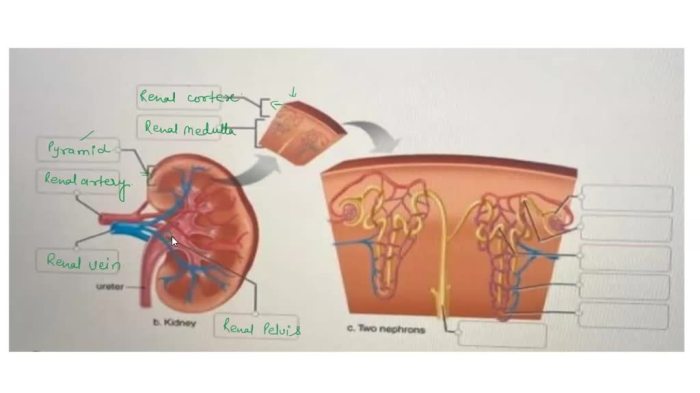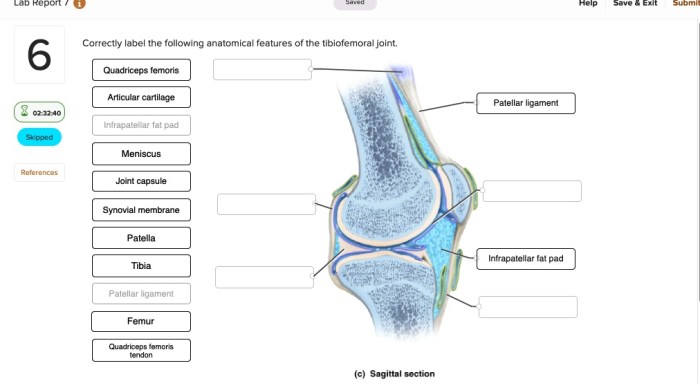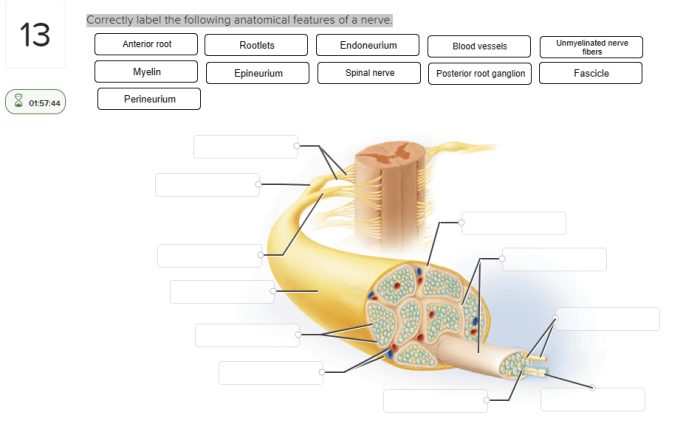Correctly label the anatomical features of the otolithic membrane. – The otolithic membrane, a crucial component of the vestibular system, plays a pivotal role in detecting linear acceleration and gravity, contributing to our sense of balance and spatial orientation. This article delves into the histological composition, function, clinical significance, and anatomical features of the otolithic membrane, providing a comprehensive understanding of its essential role in maintaining equilibrium.
The histological composition of the otolithic membrane, its sensory epithelium, and specialized cells will be examined, along with the role of otoconia in its proper functioning. Furthermore, the interaction between the otolithic membrane and the cupula of the semicircular canals in providing spatial orientation will be explored.
Otolith Membrane Structure: Correctly Label The Anatomical Features Of The Otolithic Membrane.

The otolithic membrane is a specialized structure within the inner ear that plays a crucial role in detecting linear acceleration and gravity. It is composed of a gelatinous matrix containing embedded sensory cells, known as hair cells, and small calcium carbonate crystals called otoconia.
The sensory epithelium of the otolithic membrane consists of two types of hair cells: type I and type II. Type I hair cells are flask-shaped and innervated by afferent nerve fibers, while type II hair cells are cylindrical and innervated by efferent nerve fibers.
Otoconia are attached to the tips of the stereocilia, which are hair-like projections on the surface of the hair cells. When the head is tilted or subjected to linear acceleration, the otoconia move relative to the hair cells, bending the stereocilia and triggering an electrical signal that is transmitted to the brain.
Otolithic Membrane Function

The otolithic membrane plays a critical role in detecting linear acceleration and gravity. It works in conjunction with the cupula of the semicircular canals to provide spatial orientation.
When the head is tilted, the otoconia move relative to the hair cells, bending the stereocilia and triggering an electrical signal. The brain interprets these signals to determine the head’s position and orientation relative to gravity.
The otolithic membrane also interacts with the cupula of the semicircular canals to provide spatial orientation. The semicircular canals detect angular acceleration, while the otolithic membrane detects linear acceleration. Together, these two systems provide the brain with a comprehensive understanding of the body’s movement and orientation in space.
Clinical Significance

Dysfunction of the otolith organs can lead to balance problems and spatial disorientation. Otolith dysfunction can be caused by a variety of factors, including head injuries, infections, and certain medications.
The head impulse test is a common diagnostic technique used to assess otolithic membrane function. This test involves rapidly rotating the head while observing the eyes. If the otolith organs are functioning properly, the eyes will move in the opposite direction of the head movement to maintain visual fixation.
Treatment options for otolith disorders include vestibular rehabilitation therapy, which involves exercises designed to improve balance and spatial orientation.
Common Queries
What is the otolithic membrane?
The otolithic membrane is a gelatinous structure located within the inner ear that contains sensory cells responsible for detecting linear acceleration and gravity.
What is the role of otoconia in the otolithic membrane?
Otoconia are small calcium carbonate crystals embedded in the otolithic membrane that provide the necessary weight for detecting linear acceleration and gravity.
How does the otolithic membrane interact with the semicircular canals?
The otolithic membrane interacts with the cupula of the semicircular canals to provide spatial orientation by detecting linear acceleration and gravity, complementing the rotational information provided by the semicircular canals.